MediLens
AI-powered image explanations for multilingual patient care
Rather than relying solely on interpreters or text-heavy explanations, MediLens allows clinicians to walk patients through annotated visuals in their native language. This makes abstract scans more relatable, encourages active participation in care, and strengthens trust and clarity in cross-cultural medical conversations.
Timeline
5 months
Role
UX Researcher & Product Designer
Year
2024
Project Overview
Language barriers prevent millions from understanding their medical diagnoses
Over 25.7 million Limited English Proficiency (LEP) patients in the US struggle to comprehend critical health information, leading to poor treatment outcomes and increased healthcare costs.
Interactive tablet tool for visual medical communication
MediLens is an integrated tablet plugin that enables healthcare providers to annotate medical images, use anatomical stencils, and create multilingual visual explanations that patients can access through a secure portal.
The Role of Interpreters and Why It's Not Enough
Translation Delivered
Professional interpreters bridge language gaps, providing direct translation of medical information. However, this often falls short of true comprehension.
Context Missing
Direct translation frequently misses crucial non-verbal cues, cultural nuances, and emotional context, which are vital for effective communication.
Understanding Still Unclear
As a result, many LEP patients still feel rushed, misunderstood, or disconnected, hindering their ability to make informed healthcare decisions.
The Problem
Understanding the Human Impact
Based on the research, it was revealed that patients with Limited English Proficiency (LEP) encounter multifaceted communication barriers. These challenges extend beyond translation and deeply affect their access to information, trust in providers, and overall healthcare experience.
Communication Barriers in Healthcare
"I had to Google most of the words on my medical report just to understand my diagnosis."
"I feel like I miss important details because my family member doesn't know how to translate medical terms properly."
"The doctor showed me the X-ray but I couldn't understand what the problem was. I left more confused than when I came in."
"I avoid asking questions because I'm embarrassed about my English. Sometimes I just nod and pretend I understand."
The Communication Breakdown
Complex Medical Terminology
Technical terms like "myocardial infarction" or "pneumothorax" are incomprehensible to most patients
Inadequate Interpretation
Family members lack medical knowledge, leading to diluted or misinterpreted information
Generic Educational Materials
One-size-fits-all brochures don't address individual patient conditions or cultural contexts
Healthcare System Impact
- Increased readmission rates due to poor treatment adherence
- Extended consultation times and resource strain
- Higher healthcare costs and emergency interventions
Patient Experience Impact
- Anxiety and fear about medical conditions
- Reduced trust in healthcare providers
- Delayed or avoided medical care
Solution
MediLens Workflow
A comprehensive three-stage process that transforms complex medical information into accessible, visual communication tools tailored for LEP patients.
MediLens Access
Patient and Record Setup
Access patient records, choose language settings, and load relevant visuals.
MediLens Consult
Consultation and Record
Use visual aids and annotations to explain diagnosis and treatment.
MediLens Review
Post-Consultation Access
Save annotated visuals to a secure portal for patient review.
MediLens Workflow
MediLens Access
Patient and Record Setup
MediLens Consult
Consultation and Record
MediLens Review
Post-Consultation Access
Interactive Annotation
Real-time annotation tools allow providers to circle areas of concern, highlight findings, and add notes directly on medical images for clear visual communication.
Anatomical Stencils
Library of body part stencils that can be overlaid on images, helping doctors visually pinpoint specific medical issues across different anatomical systems.
Secure Patient Portal
HIPAA-compliant platform where all annotated visuals and notes are saved, accessible in the patient's preferred language for review and sharing.
Key Benefits
For Patients
- Enhanced visual understanding of medical conditions
- Reduced anxiety through clear visual explanations
- Better treatment adherence and outcomes
- Access to materials in preferred language
For Healthcare Providers
- Streamlined consultation workflow
- Improved patient satisfaction scores
- Reduced liability and miscommunication risks
- Seamless integration with existing workflows
MediLens Interface
An integrated tablet plugin that transforms how healthcare providers communicate complex medical information to LEP patients through interactive visuals and multilingual support.
Interactive Annotation Canvas
Real-time medical image annotation with multilingual stencils
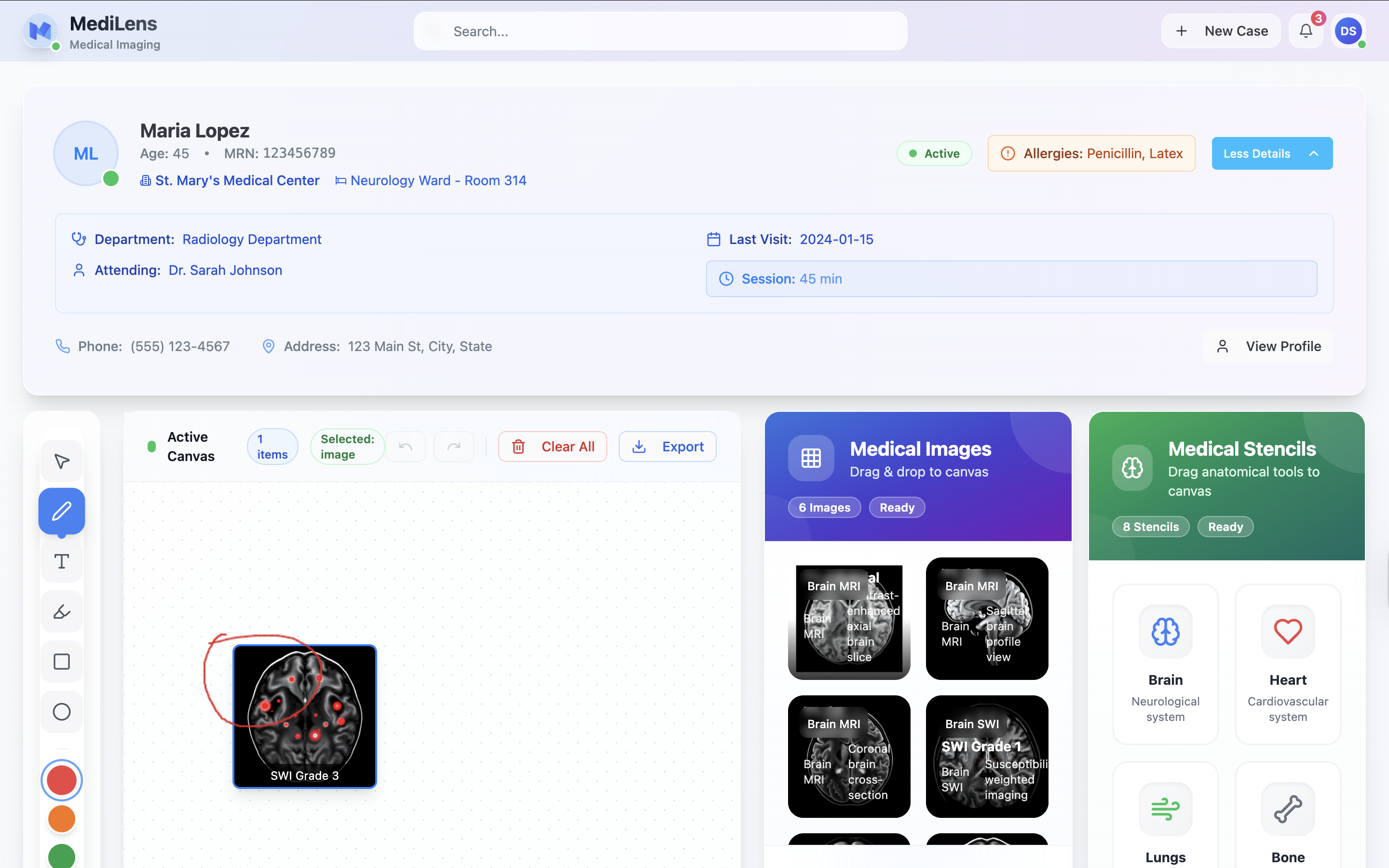
Patient Context
Linked to Medical Record Number (MRN) for comprehensive patient history and previous scans
Annotation Tools
Circle areas of concern, highlight findings, and add notes directly on medical images
Anatomical Stencils
Library of body part stencils for precise medical explanations across different systems
How MediLens Works
Patient Setup
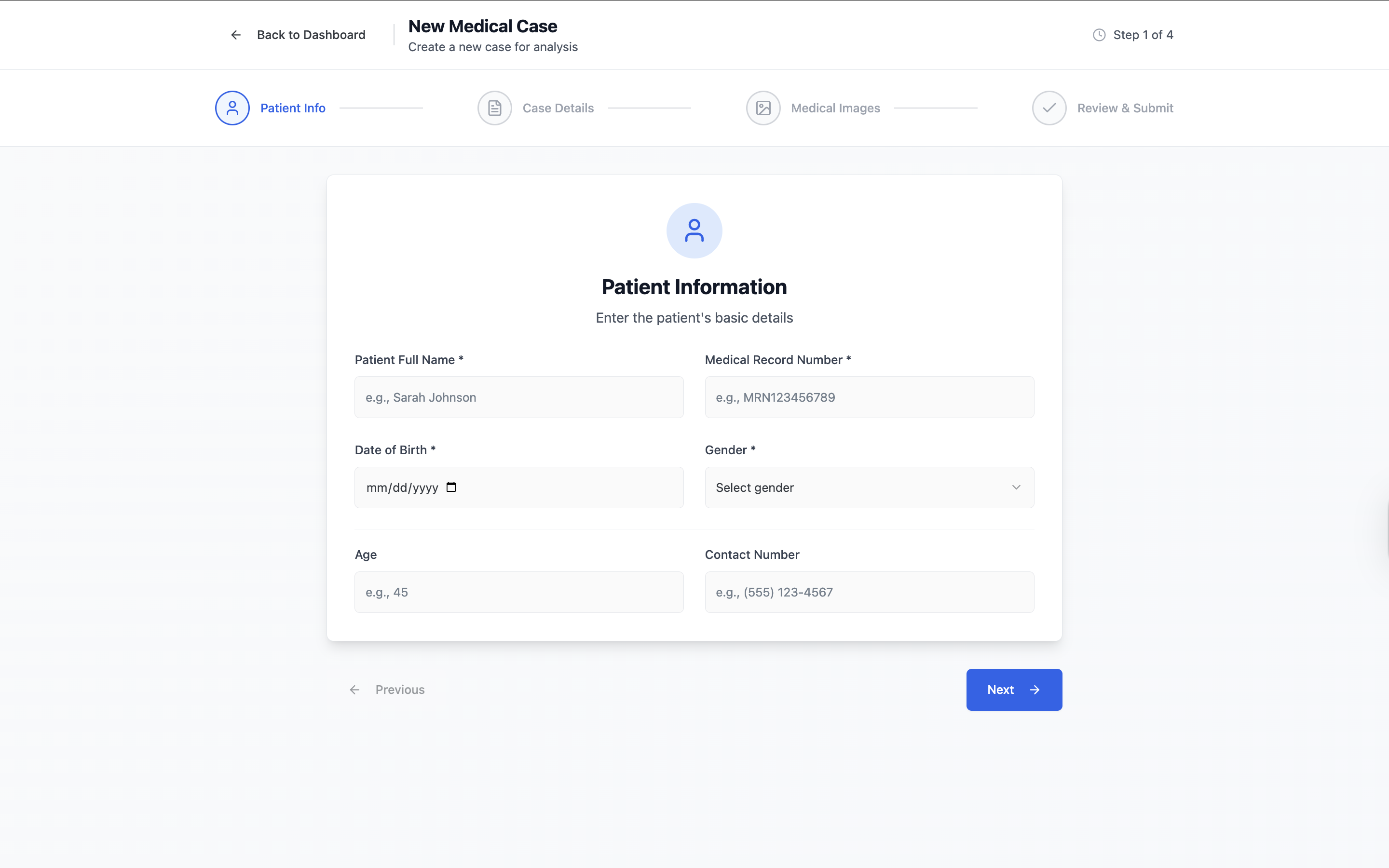
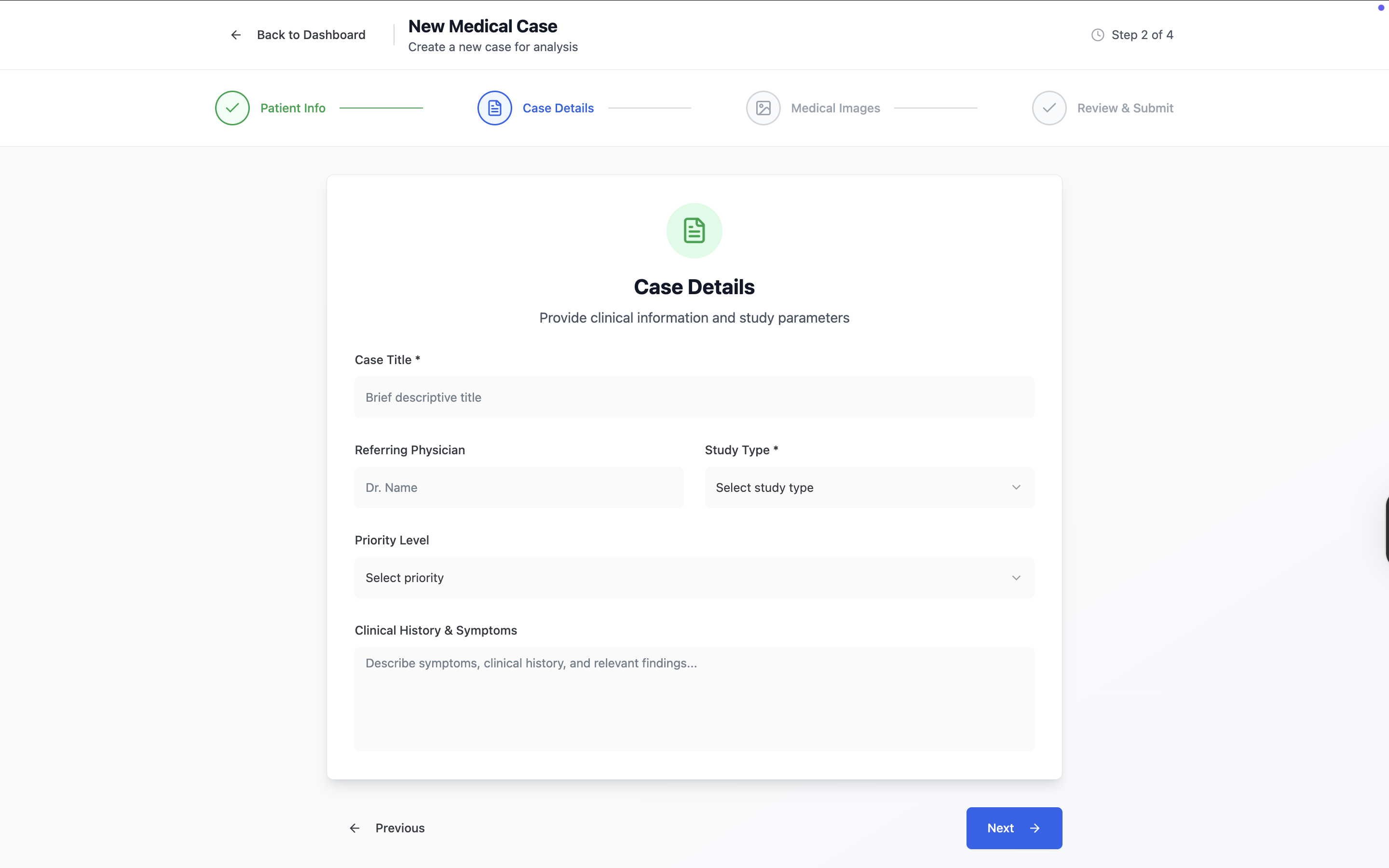
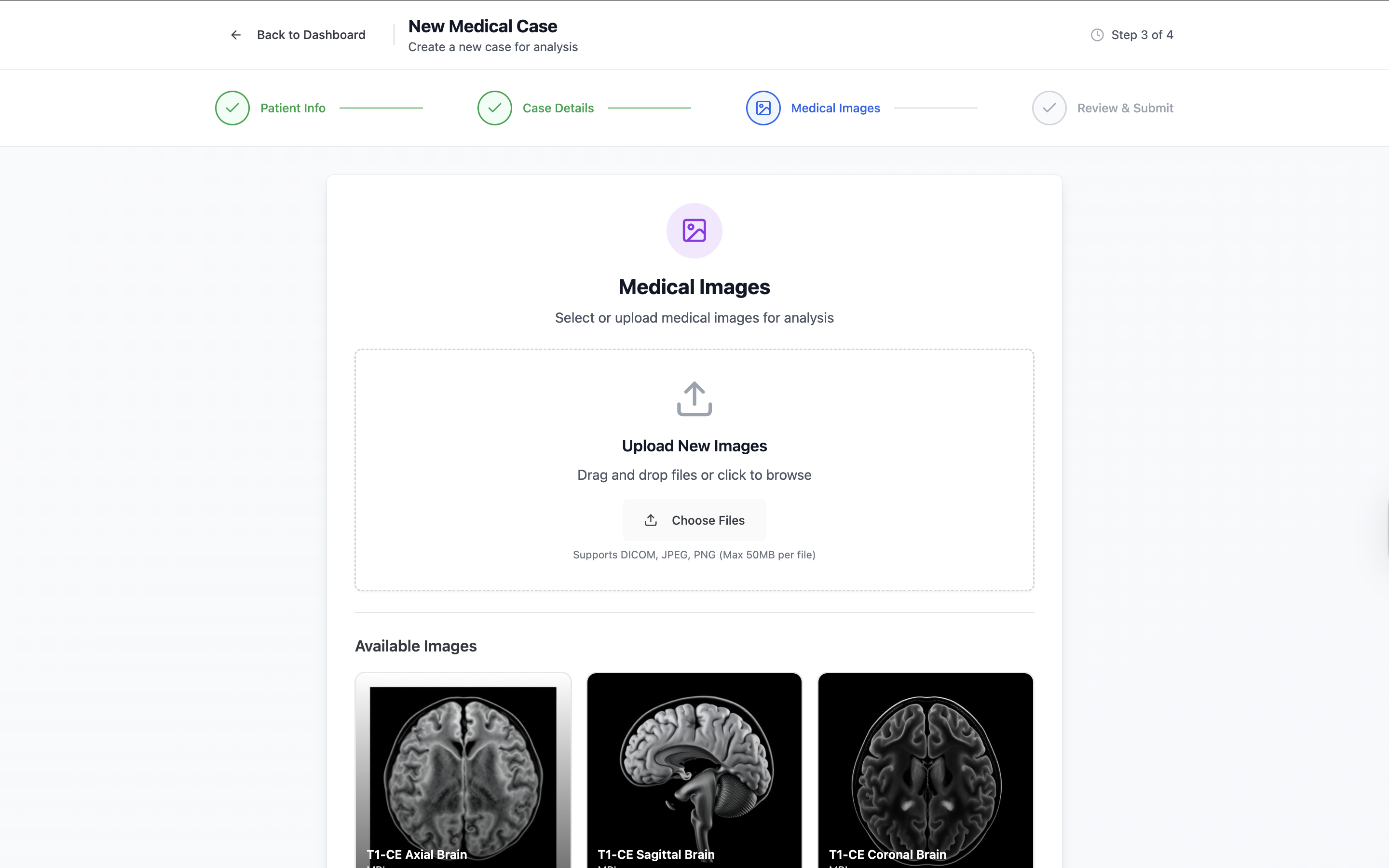
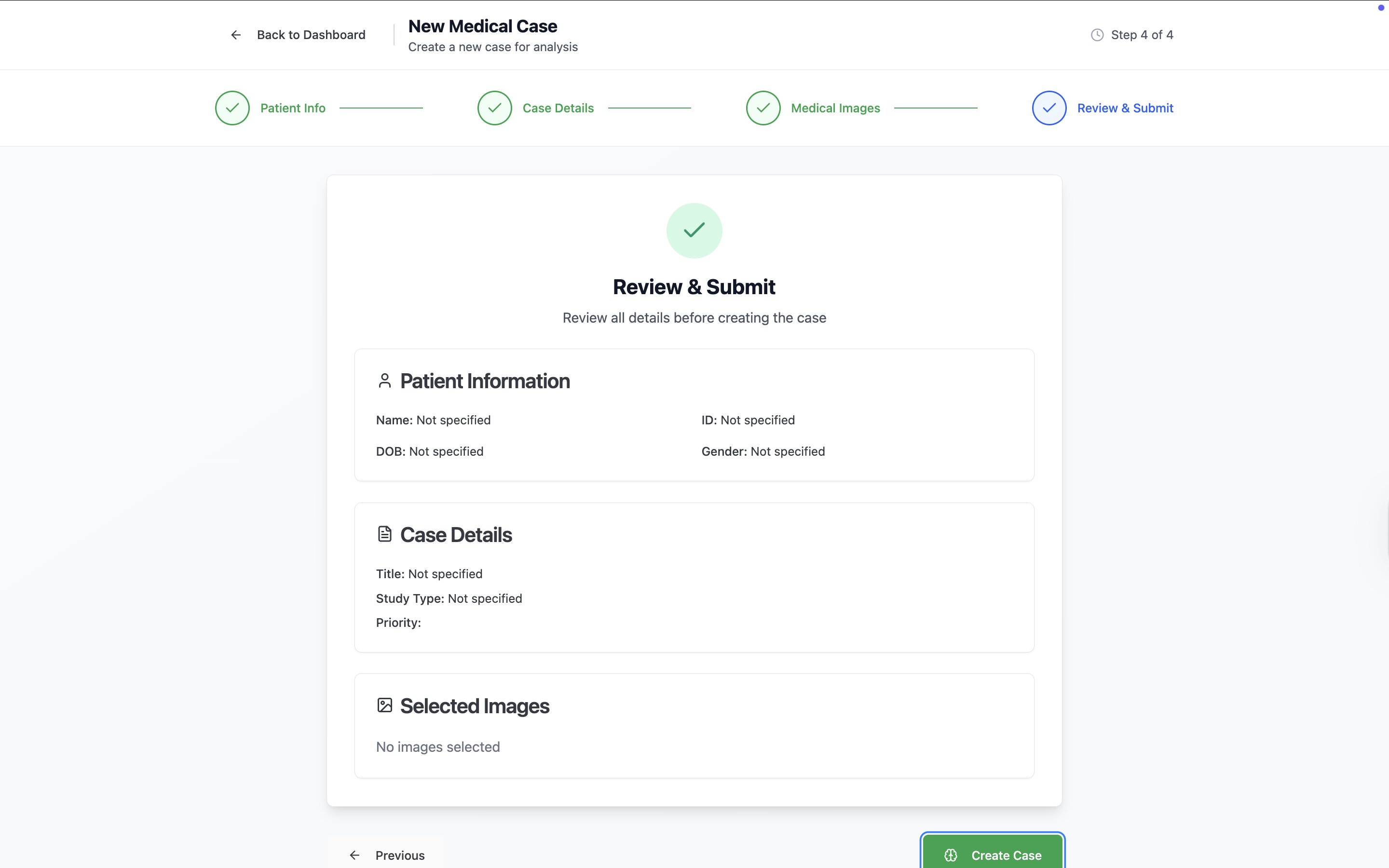
Create new cases with comprehensive patient information, linking to existing medical records for context. The four-step process guides healthcare providers through patient setup, case details, medical image selection, and final review.
Real-time Note Translation
Automatic translation of medical notes and annotations into the patient's preferred language, ensuring clear communication and understanding during consultations.
Expandable Patient Information
Interactive patient information banner that expands to show comprehensive medical history, previous scans, and relevant clinical data for informed decision-making.
Clear All Annotations
Quick and efficient workflow to clear all annotations and start fresh, allowing healthcare providers to reset the canvas for new explanations or different patient cases.
Interactive Annotation Board
Dynamic interaction capabilities on the annotation board, allowing healthcare providers to draw, highlight, and manipulate visual elements in real-time for enhanced patient communication.
Session Documentation

Document findings, add notes, and access patient history with quick shortcuts for efficient workflow.
User Research
Conducted interviews with 25+ healthcare professionals and 40+ LEP patients to understand communication barriers and workflow requirements.
Prototype Development
Developed high-fidelity interactive prototypes with annotation tools, tested with healthcare providers in clinical settings.
Usability Testing
Validated design solutions through iterative testing with both healthcare providers and LEP patients across multiple languages.
Importance of MediLens
Current: Communication Barriers
Complex medical jargon
Patients rely on family interpreters, often missing critical medical details.
MediLens: Visual Communication
Interactive multilingual tools
Patients understand their conditions through visual annotations and native language support.
Current: Limited Understanding
Generic materials
Generic brochures don't address individual conditions or cultural contexts.
MediLens: Personalized Visuals
Tailored explanations
Real-time visual aids and stencils tailored to each patient's specific condition.
Ethical Considerations
Patient Autonomy
& Informed Consent
Ensuring unbiased, comprehensive content that presents all treatment options without undue influence. This approach respects patient autonomy and supports informed consent processes.
Equity and Access
Universal Healthcare Access
Ensuring all patients benefit regardless of language proficiency or technological literacy. This includes training for patients and providers, and accessibility for individuals with disabilities to prevent health disparities.
Privacy & Confidentiality
HIPAA Compliance
MediLens complies with HIPAA regulations and implements robust security measures including secure data transmission, encrypted storage, and strict access controls to maintain patient confidentiality.
Next Steps
Clinical Validation
Conduct comprehensive clinical trials with diverse LEP patient populations to validate effectiveness and gather real-world usage data for regulatory submission.
Regulatory Approval
Work with FDA and healthcare regulatory bodies to ensure compliance with medical device standards and obtain necessary approvals for clinical deployment.
Healthcare Integration
Develop partnerships with major healthcare systems and EHR providers to ensure seamless integration into existing clinical workflows and infrastructure.